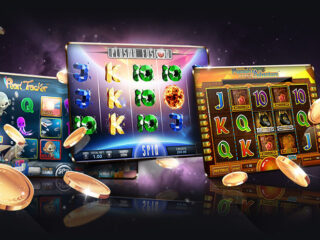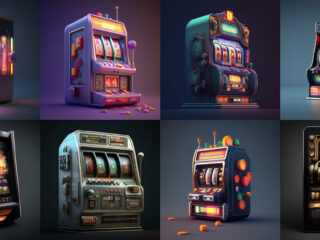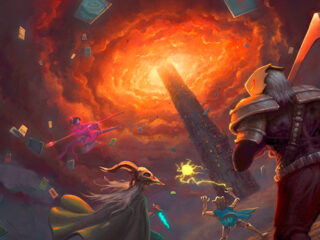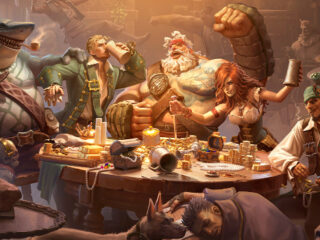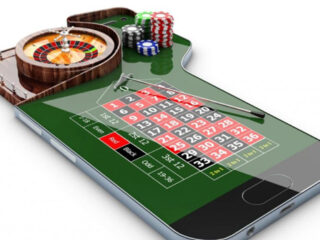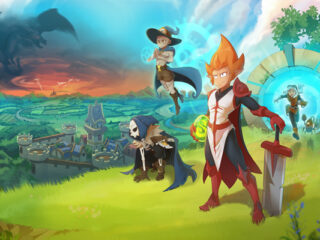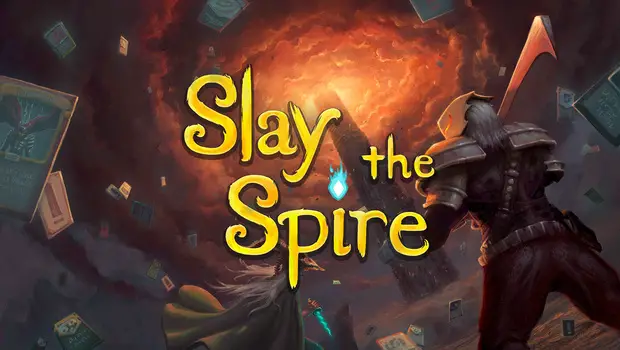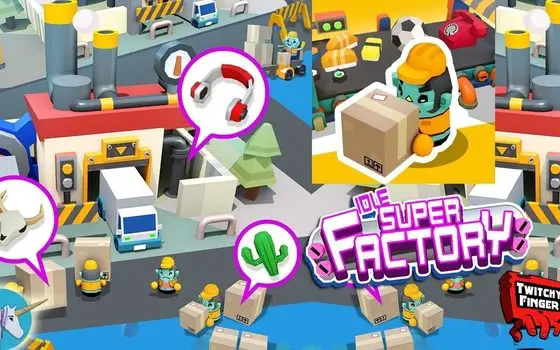The Spire Waits
The perfect mix of skill and chance. Every card game aspires to deliver that, but few ever come close. For a card game to have real staying power, it has to employ an element of chance. But it should also reward the player for their ability. Since its initial release in 2016, Mega Crit’s Slay the Spire has slowly grown into a “Mega Hit.” Slay the Spire is a super-collision of roguelikes and deckbuilding card games. It’s a roguelike, where you advance through a gauntlet of enemies and events in self-contained runs that don’t save your progress, and a deckbuilder, where you steadily build up your own optimized deck of cards for battle.
Like in all good marriages, Slay the Spire highlights the best parts of each genre. It combines the logic complexity and customization of deckbuilding with the freshness of roguelike gameplay. Finally, it is available on Android, where it becomes a dangerously addictive mobile game. As someone who played Slay the Spire on console before, the content, look and gameplay of that version is virtually identical to this one.
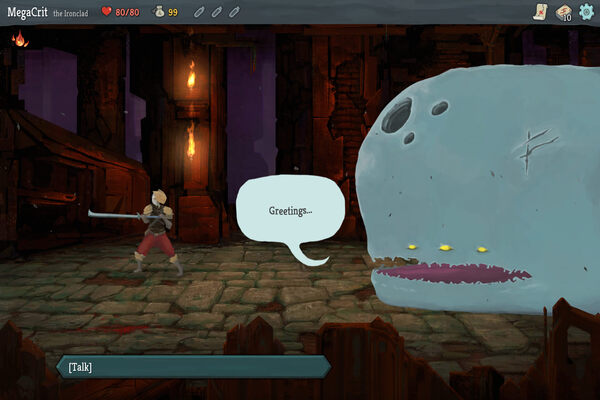
Luck Be a Malady
Like many deck-building games, combat consists of using the cards in your hand to defeat your enemy. You begin with a number of cards and a certain amount of energy to use them with. When you run out of energy, your turn ends. You’ll start out each run with simple cards that allow you to attack and defend. Along the way, you’ll slowly obtain more complex cards that can do a myriad of things like boost your strength and energy, or inflict conditions. Mega Crit developed a wealth of intriguing cards, and the way they mesh together is even more impressive.
What’s so entertaining about Slay the Spire is watching the strategy you use in each run slowly develop as you acquire cards. Each character comes with a different set of cards they can get, and there’s so much variation among those that it’s hard to duplicate the results you got from a previous run. You can try to get the same cards over and over, but due to the randomness of the way cards are rewarded, and the randomness of your draw pile, things never really happen the same way twice. It’s a chaotic mess that somehow comes together beautifully, like a Jackson Pollock painting. And thanks to the roguelike nature of the game, it happens over and over again.
There’s a lot of RPG elements at work here too. Over the course of play you can unlock four characters, each with various abilities. You begin with the simplest character, the Ironclad, a powerful bruiser who can hit hard. Then there’s the Silent, a masked assassin who can utilize poison and low-cost attacks. Also, there’s the Defect, a robot who can channel elemental orbs. And finally, the Watcher, a monk who can assume various offensive or defensive stances.
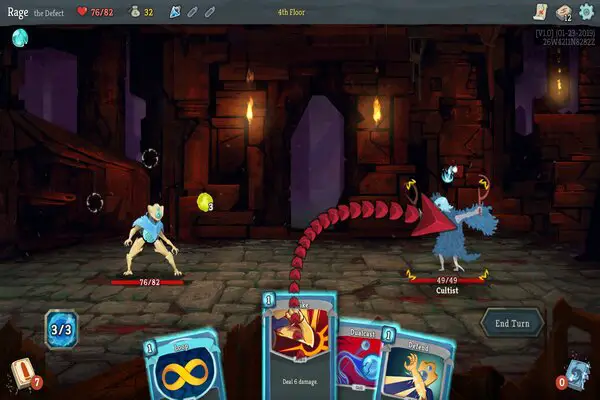
Cultist Classic
The story appeals in both simplicity and complexity. Depending on which character you select, you are a cursed, lost or broken soul who must battle out of the nightmarish realm known as the Spire. The setting defies labels, sometimes post-apocalyptic, sometimes steampunk, usually fantasy. A smorgasbord of juicy lore and world-building details exist for the close reader, as characters, enemies and stories reappear run after run. All of it unfolds over time and furthers gameplay; the closer someone gets to the end, the more they realize the Spire is not what it seems.
There are three “acts,” each of which consists of a randomized map of diverging paths that all lead to a boss at the act’s end. You can choose where to begin and also navigate yourself somewhat along forks in the road. Since the map always displays every encounter, this allows you to plan out your journey. You can choose to try and hit as many rest stops, merchants and treasure chests along the way, or risk it and fight elite enemies for better rewards.
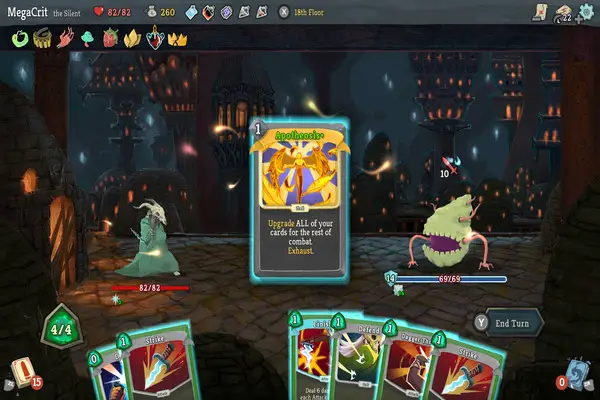
Touchy Subject
There is one complaint I have about this mobile port, and it’s to do with the touch controls. On console, you select the cards you use in battle with a control stick or directional pad. The cards appear at the bottom of the screen in the way they would like you were holding a hand of cards in your actual hand, like if you were playing poker or go-fish or some other card game. One thing I always hated about this is that you can’t see what every card does at once. However, on console you can use the control stick to move through and highlight each one to read them.
On mobile, you have to select the cards with your finger, and drag them to the middle of the screen or over enemies to use them. This is a pain, because it’s not easy to select the cards one by one if you just want to see what they do. You have to carefully finger them out of your hand but not drag them over anything else. I was in constant fear that I would accidentally use a card I didn’t want to just by trying to move them around and look at everything in my hand. It actually happened a few times. I would have liked to see some arrow buttons that allow you to peruse your hand without having to worry about this.
The Heart of the Cards
That however, is a small complaint. And it doesn’t take away much from the rest of the game. Slay the Spire is an excellent game that’s constantly amazing. No matter how much I play, I’m always discovering something new. Even after you’ve memorized all of the countless statistics of cards, relics, enemies and whatnot, the randomness of the game still manages to throw everything at you from a different angle that completely upends you. Every run feels new, unique and fresh. I keep thinking I’ll get tired of it, but I don’t. And it always fits the mood I’m in, whether I want to relax and lazily paw my fingers at the screen, or if I want to amp things up and go into a monstrous boss fight. I’m so happy that I’m almost done writing this review so I can tear myself away from my keyboard and go back to playing it. Forgive me if I just trail off in the middle of a…
Hardcore?
Hell Yes!
The perfect test of both skill and luck, don’t miss this one!
